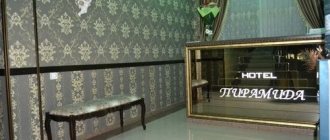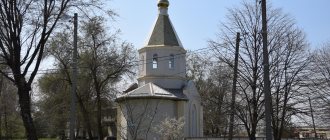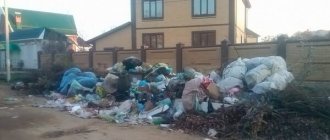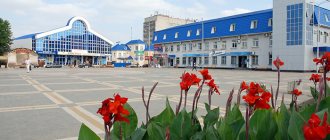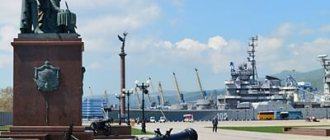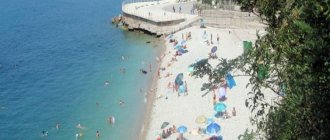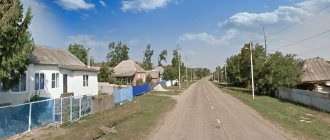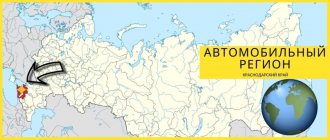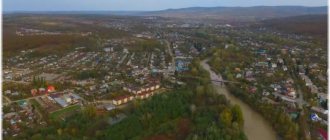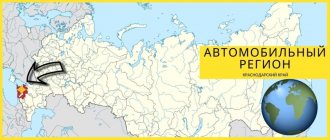Krasnodar is the largest economic and cultural center of the Southern Federal District. At one time it was a leader in the Russian ranking of cities with growing business activity. Forbes magazine has recognized the city three times as “The Best City in Russia for Doing Business.” All this could not but affect the increase in the attractiveness of Krasnodar. The city has many interesting places. There is a large selection of excursions.
Krasnodar
Within walking distance from the sea
Krasnodar is the capital of the Krasnodar region. It is located on the banks of the Kuban River. The Black Sea coast is only 120 kilometers from here, and the Sea of Azov is 140 kilometers. From Moscow to the Kuban capital – 1300 kilometers. The cities are connected by the M4 Don highway. Unofficially, Krasnodar is called the “capital of the South of Russia”. Unlike many other regional centers in the country, its population is growing. Recently, the number of residents, including its suburbs, exceeded the million mark.
Krasnodar is a very green city
From a geographical point of view, the city is located on the Kuban-Azov lowland. This is the very south of the East European Plain. The terrain is flat, with a slight slope in the northwest direction. The height above sea level does not exceed 32 meters. The Kuban River goes around the city from the south, forming bizarre bends. Not everyone knows that Krasnodar is located in a seismically active zone. Earthquakes up to magnitude 5 have occurred here.
Krasnodar is characterized by long, hot summers and short, warm winters. Spring starts in the second half of February. Summer comes at the beginning of May and lasts until the end of September. At the height of summer, the average temperature is +24 degrees, but sometimes the thermometer reaches +40 degrees. There are practically no negative temperatures, so there is no snow in winter. The most precipitation falls in November and December, the least in August. December is considered the rainy season.
Ecology of Krasnodar
The environmental situation in the southern capital is defined by researchers as tense. The problem of air pollution from road transport is of particular relevance. In areas of the city through which major highways pass, the permissible norms for the content of hydrocarbons, carbon monoxide, and nitrogen oxide are exceeded by 1.5 to 7 times.
Krasnodar is getting upset at a tremendous pace. Every year more and more people come here for permanent residence, and the number of vehicles increases in proportion to the population, of which Krasnodar has the most registered vehicles per capita among Russian cities. In the summer, transit transport begins to play an important role, when the traffic flow increases to 2 million cars.
Scientists note a very high level of air pollution caused by the activities of electric power facilities, petrochemical enterprises, oil refining and fuel industries. In the city center, the content of nitrogen dioxide and carbon monoxide in the air is 1.5-2 times higher than in other areas. This situation is explained by the constant supply of these substances from enterprises located in other areas of the city, with prevailing western, northeastern and eastern winds. The industrial area of the city suffers the most from pollution, often due to improper operation or malfunction of dust collection and gas cleaning equipment systems. Nevertheless, according to the results of a study conducted by the Ministry of Natural Resources and Ecology of the Russian Federation in 2022, Krasnodar ranks third in air cleanliness among Russian cities with a population of over 500 thousand people.
The city's water bodies experience high anthropogenic pressure. Several times the permissible concentrations of harmful substances, including copper, iron compounds, petroleum hydrocarbons, and nitrates, are recorded in the water.
All of the above indicates that Krasnodar is now far from the most favorable city for permanent residence.
Catherine's Gift
On the territory of the City Garden, archaeologists discovered the remains of a large settlement. More than 2 thousand years ago, the Meotian tribes lived in these places. According to one version, it was a colony of Indians who moved to the Black Sea coast. Later, during the Bosporan Kingdom, a large city was built on the banks of the Kuban, surrounded by fortified walls. Now this place is the village of Elizavetinskaya.
Monument to Catherine II
Krasnodar was officially founded in 1793. Then Empress Catherine II, by decree, transferred local lands to the Cossacks for eternal use. It is clear why the Cossack settlement was called Yekaterinodar. A year later, active planned land development began. First of all, the Cossacks built a fortress on the banks of the Karasun River. Civil development moved away from it. According to the documents, in the first year “9 houses, 75 huts, 154 dugouts” were built.
Ekaterinodar found itself at the crossroads of important roads, so it developed rapidly. Already in 1860, it became one of the major commercial and industrial centers of the empire. An iron foundry and metal processing plants were built here. The impetus was given by Maikop oil, which was processed in Yekaterinodar. The city suffered greatly during the Civil War. For some time it was the White Guard capital of the South of Russia. After the change of power, it was renamed Krasnodar. This happened in 1920.
Hydrography of Krasnodar
The largest river in the North Caucasus, the Kuban, flows through the city. Its length is 870 km, and the basin area is 57,900 km². Many artificial reservoirs have been created on the flat part of the river. In the city area, the river is characterized by a tortuosity of its channel. In the process of its natural movement, the river broke through the necks of the loops in places, straightening its bed. The former knee formed floodplain lakes - oxbow lakes. An example of an oxbow lake is Staraya Kuban Lake near Krasnodar.
Due to the significant slope of the riverbed, the Kuban is distinguished by its fast flow and great destructive power during floods and floods. The amplitude of water level fluctuations near Krasnodar reaches 5 meters. Reservoirs were built to regulate flow. In 1973, the filling of the largest artificial reservoir in the Krasnodar Territory, the Krasnodar Reservoir, began, which finally regulated the river flow of the Kuban. Previously, the Karasun River, a tributary of the Kuban, flowed through the city.
For the curious
Guests of the city are offered about twenty excursions on a wide variety of topics. You should start with the sightseeing bus and walking route “Meet the City of Krasnodar”. The program includes all the main attractions not only in the historical center, but also in new buildings.
The excursion “Industrial City of Krasnodar” allows you to visit the largest enterprises “Ochakovo”, “Klaas”, “Saturn” and “Alexandria”. It is impossible to get there on your own. At the Ochakov plant, tourists visit the Kvasovar's Hut, a reconstruction of the 18th century. After completing the excursion, guests are treated to kvass, juices and lemonade.
Guests of the city are offered about 20 excursions on a wide variety of topics.
The two-hour route “Three Centuries of the All Saints Cemetery” is dedicated to famous people of the city who are buried in the oldest city cemetery. This is, for example, the writer N.N. Kanivetsky, cornet Korzhevsky, ensign Rumyantsev, podesaul Aseev and others.
In summer, it is worth taking the “Walk through the Botanical Garden” excursion. The southern climate allows you to grow a huge number of plants outdoors. There are 20 thousand trees and 200 thousand shrubs growing in the garden! But the route “Flowers at the Obelisks” is dedicated not to flowers at all, but to monuments from the period of the Great Patriotic War.
Gourmets will certainly enjoy the Krasnodar-Gastronomic route, which includes visits to three restaurants. At the Stan restaurant-museum, tourists are introduced to the ritual of hospitality. At Dukhan they serve Kuban dishes. The Pech restaurant teaches you how to cook traditional dishes. Another “delicious” gastrotour is called “Kuban Delight”. Participants are invited to guess the ingredients of borscht at the BorschBerry restaurant, take a master class on cooking jellied rabbit and taste five types of Kuban liqueurs.
There are specialized excursions dedicated to any one street. For example, in the company of a guide you can walk along Aleksandrovsky Boulevard, Krasnaya, Krasnoarmeyskaya and Rashpilevskaya streets. The maximum number of attractions is concentrated on them. During the “Path of Health” excursion, you have the opportunity to visit Krasnodar health resorts, try a herbal cocktail and healing water.
Modern architecture of Krasnodar
There are a number of thematic routes. The name of the tour “Architectural Krasnodar” speaks for itself. The Domes over the City tour includes visits to six main temples. The “Theater Leaflet” route program involves getting to know not only theaters, but also theater museums. There is an opportunity to visit the Krasnodar Hippodrome in an organized manner. In this case, you will even be able to visit the stables. For lovers of active recreation, bicycle tours around the city are offered.
Policy
The building of the regional administration in Krasnodar
In time Soviet During the period, high authority in the region was divided between three persons: the first secretary of the Krasnodar Committee of the CPSU (in fact, who had the greatest powers), the chairman of the regional Council (legislative power) and the chairman of the regional executive branch. Committee (executive branch). Since 1991, the CPSU lost all power and the head of the regional administration, and as a result, the governor was appointed/elected along with the elected ones. regional parliament.
The Charter of the Krasnodar Territory is the basic law of the region. The Legislative Assembly of the Krasnodar Territory is a permanent legislative (representative) body of the province. The Assembly exercises its powers by adopting laws, regulations and other legal acts, as well as monitoring the execution and compliance with the laws and other legal acts adopted by it. The highest executive body is the provincial government, which includes territorial executive bodies such as district administrations, committees and commissions that promote development and manage the day-to-day affairs of the province. The regional administration supports the activities of the governor, who is the highest official and acts as a guarantor of compliance with the Charter of the region in accordance with the Constitution of Russia.
Main attractions
There are eleven theatres, ten concert halls and twelve museums in Krasnodar. People have lived on the territory of what is now the Krasnodar Territory since ancient times. The climate here is very good and the nature is picturesque. You can get acquainted with the history of the region at the Krasnodar Historical and Archaeological Museum-Reserve. It bears the name of its founder, military sergeant major Evgeny Felitsyn. The museum opened its doors to visitors 140 years ago!
Contemporaries called Felitsyn “the encyclopedia of the Caucasus.” He spent his small salary on purchasing exhibits. He managed to collect the best collection of Polovtsian stone sculptures in the world. He collected them throughout the Kuban region. In the first year alone, the museum exhibition was replenished with 276 archaeological objects.
Monument to Russian-Circassian friendship
The museum currently has nine permanent exhibitions. The exhibition “The Ancient Past of Kuban” is of greatest interest. Here are collected things created by man over five thousand years! The decorations made by the Scythians are especially impressive. There are other rarities. For example, the Sea Kaleidoscope exhibition features a stuffed lobster and a whale skeleton. What's surprising here? Both exhibits appeared in the museum in 1880!
The name of the collector Fyodor Akimovich Kovalenko is well known in Krasnodar. He is the founder of the local Art Museum. He was a poor man and had no special education. But he really loved painting. He managed to collect a magnificent collection of paintings and persuade officials to allocate space for a permanent exhibition. The museum opened in 1904 and was the first of its kind in the North Caucasus.
Catherine Square
Now the exhibition occupies two buildings - the former house of engineer Shardanov and the Ekaterinodar office of the state bank. The collection numbers about 13 thousand items. Of particular value are works of the Russian avant-garde and masterpieces of Japanese color woodcuts. The museum has a huge collection of bookplates - more than 2.5 thousand drawings. And all this became possible thanks to the realization of the dream of one person - Fedor Kovalenko.
On the occasion of the 75th anniversary of the legendary bard, the House of Creativity of Vladimir Vysotsky was opened in the city. Among the rarities is the table at which he composed songs and poems. Pyotr Ignatov, commander of the Batya partisan detachment, is well known in the city. The exhibition of the Ignatov Brothers Apartment Museum is dedicated to him. Of interest is the magnificent collection of paintings and birch bark products by the artist B. F. Kupriyanov. His works can be seen in the Birch Bark Miracle Museum.
In Krasnodar there is a museum of the North Caucasus Railway and a Fire-Technical Exhibition. The Krasnodar Postal Museum is the only one in Kuban. It is famous for its rich stamp collection. The exposition of the historical park “Russia – My History” covers the period from antiquity to the present day. Using the latest technology, the material is presented in an engaging way. Those with a sweet tooth should check out Chocolate Avenue. This is both a museum and a chocolate shop.
There are six temples in the city. The main one is St. Catherine's Cathedral. The reason for its construction was the crash of the imperial train. Then Alexander III and his family got into an accident. They all miraculously escaped. The most beautiful church in Krasnodar is the Holy Trinity Church. It was painted by the artist Safonov, a student of the famous Vasnetsov.
St. Catherine's Cathedral
Krasnodar is a very green city. Chistyakovskaya Roshcha Park was recognized as the best amusement park in Russia with a number of visitors from 250 to 500 thousand people. The oldest parks are “Sunny Island” and the City Garden. And the newest is Krasnodar Park. He recently became a laureate of the All-Russian prize in the field of architecture and design “Signs of Cities”.
Monument to Shurik and Lidochka
Of interest to sports fans are the Krasnodar Stadium, the Hippodrome, the Olympus Sports Palace and the Basket Hall, the home court of the Lokomotiv-Kuban basketball team. With children you can visit the Safari Park zoo and the circus. Mega allows you to combine entertainment with shopping. It is considered the largest European-level shopping and entertainment complex in the south of Russia.
Train Station
The Krasnodar-1 railway station is considered the largest station of the North Caucasus Railway. The station building is located in the very center of the city at st. Station Square, 1. The first railway station building was built in 1889; in 1952, the renovated station began to function. The station serves long-distance trains that depart to all major cities of Russia. There is a car park on the territory of the station.
Popular train directions at Krasnodar-1 station: Novorossiysk, Perm, Rostov-on-Don, Tuapse, Samara, Adler, Goryachiy Klyuch, Moscow, Kislovodsk, St. Petersburg, Tikhoretskaya.
There are also two more stations in the city: Krasnodar-Sortirovochny and Krasnodar-2. Krasnodar-Sortirovochny is a freight-passenger station where 14 commuter trains pass daily. The Krasnodar-2 railway station serves only commuter trains.
Demography
Population
: 5,404,300 (2014 estimate);[21]5,226,647 (2010 Census);[10]5,125,221 (2002 Census);[22]5,113,148 (1989 Census).[23]
Calculations
The largest cities in the Krasnodar Territory All-Russian Census 2010 | |||||||||
| Classify | Administrative division | Pop. | |||||||
| Krasnodar Sochi | 1 | Krasnodar | City of regional significance Krasnodar | 744,995 | Novorossiysk Armavir | ||||
| 2 | Sochi | Regional city of Sochi | 343,334 | ||||||
| 3 | Novorossiysk | City of regional significance Novorossiysk | 241,952 | ||||||
| 4 | Armavir | City of regional significance Armavir | 188,832 | ||||||
| 5 | Yeysk | Town of regional significance Yeysk | 87,769 | ||||||
| 6 | Kropotkin | Town of regional significance Kropotkin | 80,765 | ||||||
| 7 | Slavyansk-on-Kuban | Town of regional significance Slavyansk-on-Kuban | 63,842 | ||||||
| 8 | Tuapse | City of Tuapse of regional significance | 63,292 | ||||||
| 9 | Labinsk | Town of regional significance Labinsk | 62,864 | ||||||
| 10 | Tikhoretsk | Town of regional significance Tikhoretsk | 61,823 | ||||||
The population of the Krasnodar Territory is concentrated in the R. Kuban drainage basin, which is traditionally Cossack land (see History of the Cossacks
).
The Kuban Cossacks are now generally considered ethnic Russians, although they are still a distinct minority in the area. Historically, they were considered ethnic Ukrainians[ citation needed
] and reported their language as Ukrainian in the census until the 20th century;
this change in identity is due to the assimilation and historical persecution of the Kuban Cossacks[ citation needed
], which was especially noticeable due to questions of their loyalty[
citation needed
] to Moscow and the communist state during the Russian Revolution and World War I[
citation needed
]. Other notable ethnic groups are the Adyghe, who have lived in the Kuban for thousands of years, and the Armenians (including the Christian Amsheni and Cherkesogai), who have lived in the region since at least the 18th century.
Ethnic groups
: The 2010 Census identified ethnic groups as shown in the following table:[10]
| Ethnicity | Population | Percent |
| Russians | 4,522,962 | 88.3% |
| Armenians | 281,680 | 5.5% |
| Ukrainians | 83,746 | 1.6% |
| Tatars | 24,840 | 0.5% |
| Caucasian Greeks | 22,595 | 0.4% |
| Georgians | 17,826 | 0.3% |
| Belarusians | 16,890 | 0.3% |
| Adyghe | 13,834 | 0.3% |
| Gypsy | 12,920 | 0.3% |
| Germans | 12,171 | 0.2% |
| Azerbaijanis | 10,165 | 0.2% |
| Turks | 8,527 | 0.2% |
| Moldovans | 5,170 | 0.1% |
| Assyrians | 3,764 | 0.1% |
| Other | 79,768 | 1.5% |
- 101,657 people were registered in administrative databases and could not indicate nationality. The proportion of ethnic groups in this group is estimated to be the same as in the stated group.[24]
[25]
Religion
| Religion in the Krasnodar region as of 2012 (Atlas Sreda Arena)[26][27] | ||||
| Russian Orthodoxy | 52.2% | |||
| Other Orthodox | 0.9% | |||
| Old Believers | 0.5% | |||
| Other Christians | 3.5% | |||
| Islam | 1.3% | |||
| Spiritual but not religious | 22.5% | |||
| Atheism and godlessness | 13.2% | |||
| Other and undeclared | 5.9% | |||
According to a 2012 survey[26] 52.2% of the population of Krasnodar Krai adheres to the Russian Orthodox Church, 3% are unaffiliated general Christians, 1% are either unaffiliated Orthodox Christians or members of non-Russian Orthodox churches, and 1% are Muslims. Additionally, 22% of the population say they are “spiritual but not religious,” 13% are an atheist, and 7.8% follow other religions or did not answer the question.[26]
